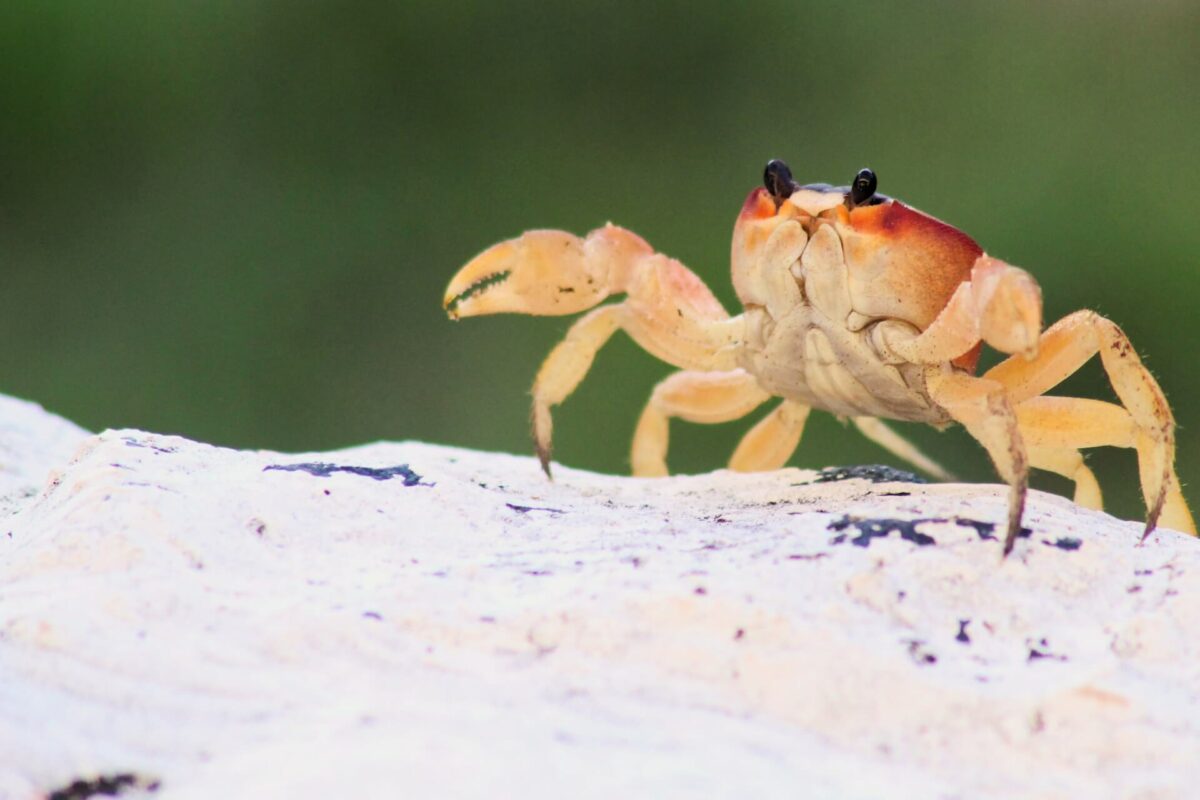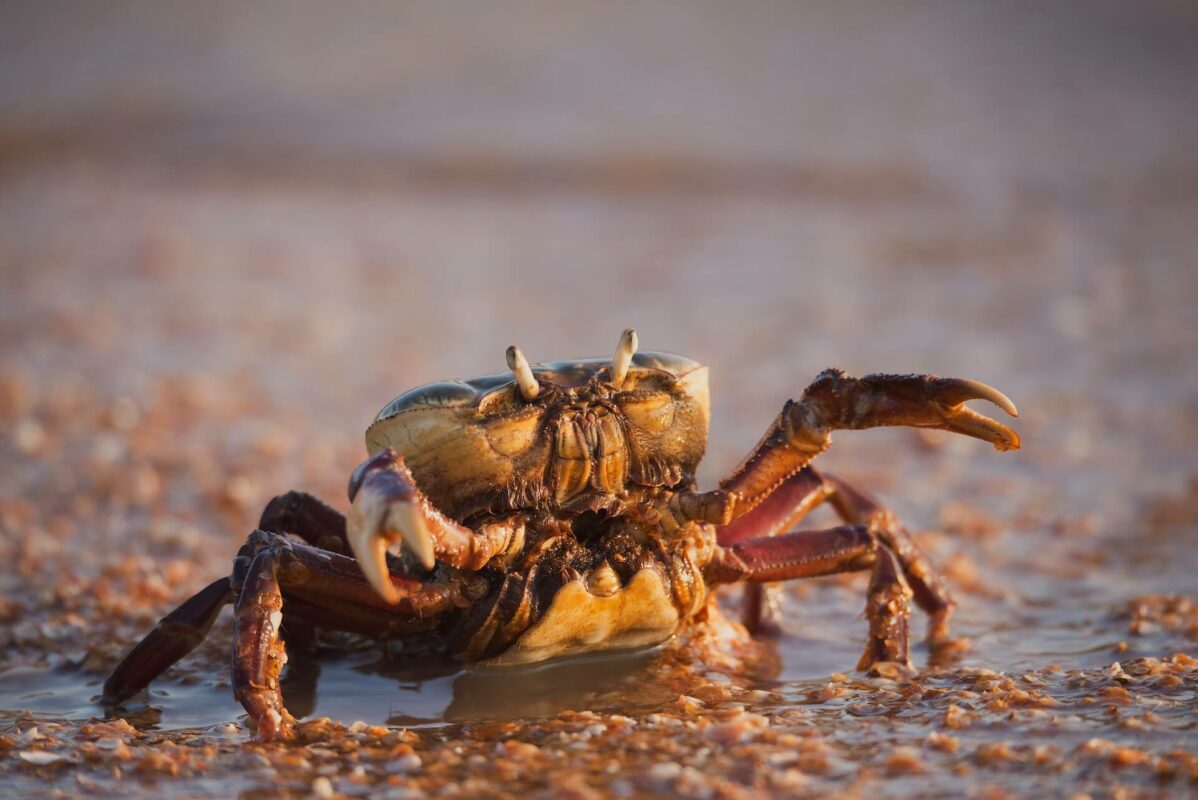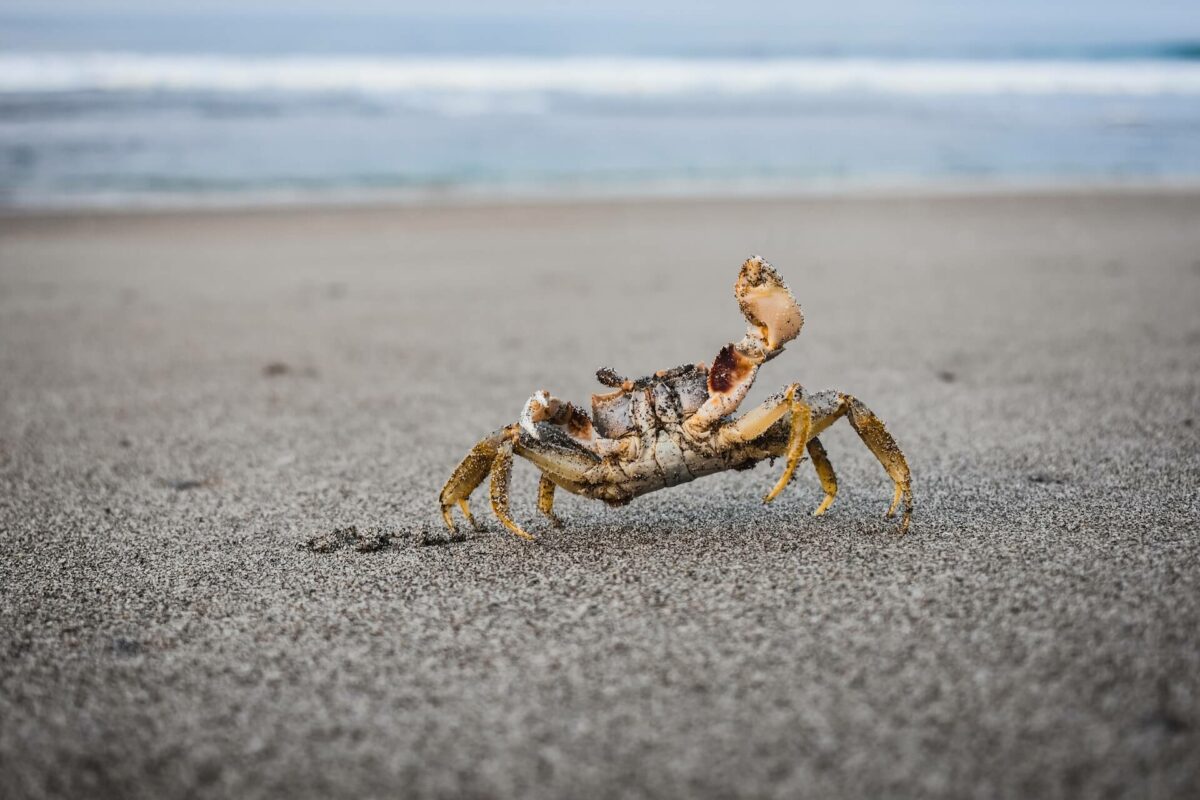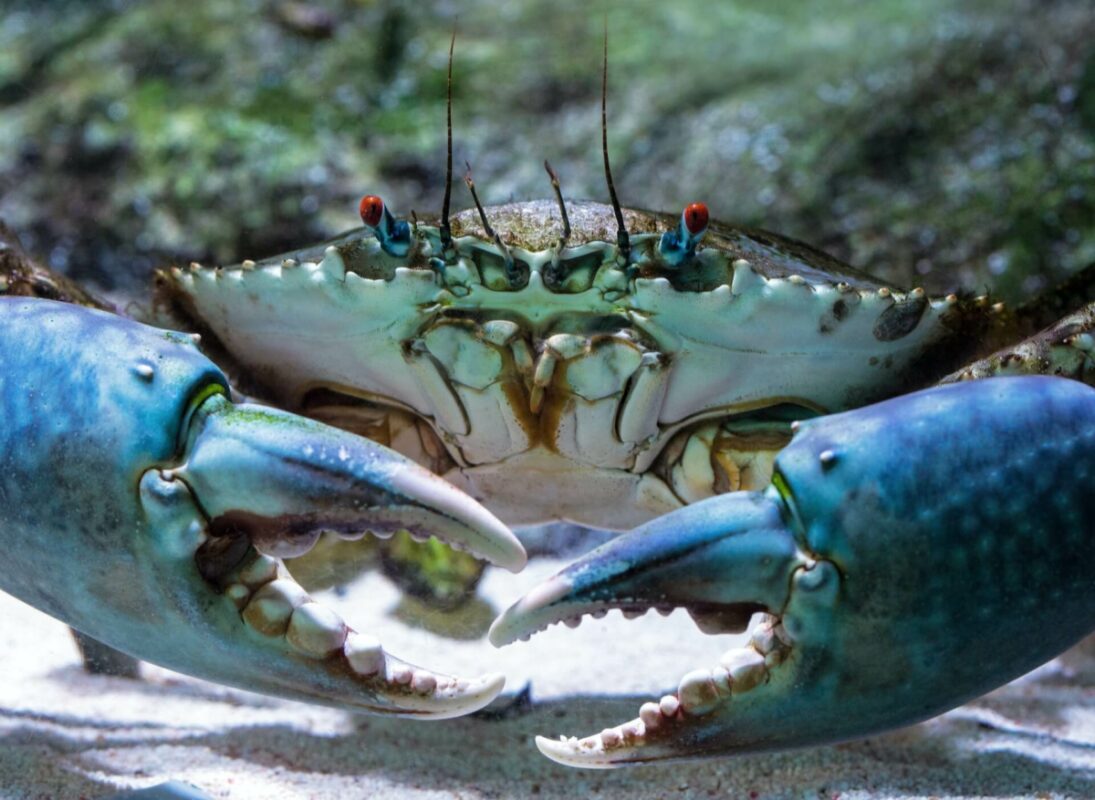Crabs can be found all over the world in all seven oceans, often searching through rock pools or shimmying across the ocean floor in search of food.
With approximately 4,500 crab species, they range vastly in size, habitat, behavior, and diet.
This brings up an interesting question that many people find themselves wondering when on the topic of crabs and specifically their diets. Are crabs carnivores?
Crabs can be enormous, with claws that are capable of snipping a human finger off in one clean nip, so what fuels these hunky crustaceans?
If this question has ever crossed your mind, don’t worry, you’re not alone. In this post, we’re going to delve deeper into the diet of crabs and find out if they are carnivores or not.
So let’s dig in…
Are Crabs Carnivores?
No, most crabs are NOT strictly carnivores. Instead, almost all crab species are omnivores that feed mostly on meat such as krill, mollusks, and worms, but also on algae and seaweed.
However, crabs tend to eat mostly meat and supplement with plant-based food as and when needed.
Crabs are opportunistic feeders that aren’t particularly fussy when it comes to food, they’ll take whatever they can get.
Some crab species are cannibals that will feed on members of their own species to survive, including the sick and injured, and even their own young.

Other crabs, such as the coconut crab, feed primarily on fruits, nuts, and seeds, they live on land so are mostly scavengers that feed on whatever they can get their claws on.
Whilst most crabs do feed primarily on meat, they also feed on lots of other food sources that provide them with the energy and nutrition needed to survive.
Are Most Crabs Omnivores?
Yes, most crab species are omnivores that feed on a combination of both meat and plant-based food.
With so many different species of crab, it’s difficult to generalize them all into either omnivores or carnivores as their diets differ greatly.
Blue crabs for example are an omnivorous species that feeds on a variety of foods, including fish, mollusks, crustaceans, and plant matter.
On the other hand, stone crabs are primarily carnivorous and use their giant claws to rip open clams, mollusks, worms, and other crustaceans.
There are a number of crab species that rarely consume plant matter, and these species have evolved to be efficient hunters that don’t need to rely on anything else.
King crabs, snow crabs, and Dungeness crabs are also primarily carnivorous and use their claws and hunting skills to eat a meat-based diet.
What Do Crabs Eat?
Crabs are known to be opportunistic feeders that will take whatever comes their way, but their diet can vary depending on the species and environment.
Most crabs tend to eat meat and supplement with plant matter such as algae and seaweed when prey is scarce.
Crabs are mostly omnivorous and feed on a varied diet consisting of small fish, worms, mollusks, krill, crustaceans, as well as seaweed and algae.

Most crabs feed on a mixed diet as this allows them the best results when it comes to growth and fitness.
Most crabs are known to have an incredibly diverse diet, sometimes even changing their diets as they grow and mature.
Do Crabs Eat Other Crabs?
Yes, crabs often eat other crabs. In fact, many crab species rely on eating other crabs as a food source which helps to control populations in some areas.
Sick or injured crabs often meet their fate this way, with the larger crabs taking advantage of an easy meal that’s rich in protein.
There are a number of reasons why crabs eat other crabs, including eliminating competition and protecting vital resources.
It’s thought that crab cannibalism happens most frequently when there are too many crabs in one condensed area, specifically 15 crabs per cubic meter.
It’s at this point when crabs start looking at their neighbors as if they’re tasty crab sticks, and will start feasting on one another.
Mother crabs will regularly dine on their own young to survive, but given that most crabs lay hundreds of thousands, often millions of eggs at once it doesn’t do too much damage to her offspring.
It’s important to note that not all crabs are cannibalistic, with many species evolving to eat other types of prey such as those discussed earlier.
Are Crabs Predator Or Prey?
Crabs can be both predators and prey, as they often feed on other small animals such as worms and krill, but they themselves fall victim to seabirds and turtles.
As predators, crabs are equipped with two giant claws that they use to rip their prey into bite-sized chunks, making it easier for them to eat.
They’re able to ambush their prey and believe it or not, they’re actually pretty quick and agile when chasing down a runner.

However, marine mammals, sea birds, turtles, large fish, and much more are always on the lookout for a crab sandwich.
Many crabs go from being a predator to prey very quickly when they come across a larger animal that’s looking for a meal.
Crabs play a very important role in marine ecosystems by helping to control populations of their prey but also being a valuable food source for other marine creatures.
Wrapping Up
To sum up, most crabs are omnivores and not strict carnivores. However, crabs do primarily feed on a meat-based diet that consists of some plant matter here and there to fill the gaps.
The diet of crabs depends largely on the species, and given that there are around 4,500 different species their diets can vary greatly.
Truth is, crabs can be classified as either carnivores or omnivores as most species feed on a mixture of both meat and plant matter.
Crabs have evolved over millions of years to adapt their diet when needed, which is a large part of why they’re so successful in their ocean habitats.
Thanks for taking the time to learn more about crabs and their diets today, I hope you’ve enjoyed being here.

Hi, I’m George – the founder of MarinePatch. I created this blog as marine wildlife has been my passion for many years. I’ve spent over a decade in the marine wildlife industry and spent years out in the field conducting research. In today’s modern world, an online blog is the best place for me to share my findings and reach as many people as possible to help educate and inspire others. Enjoy your time here and you’re welcome back anytime!

